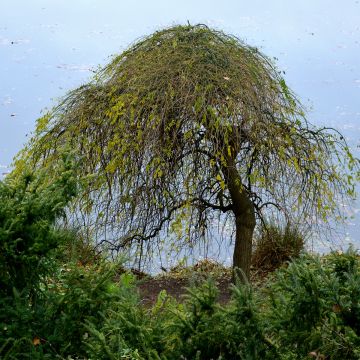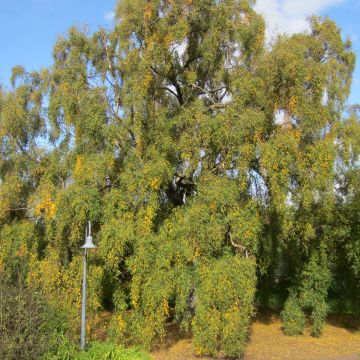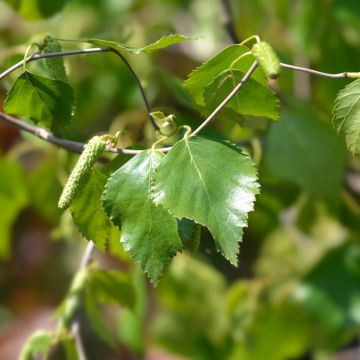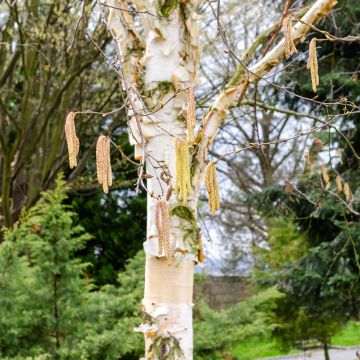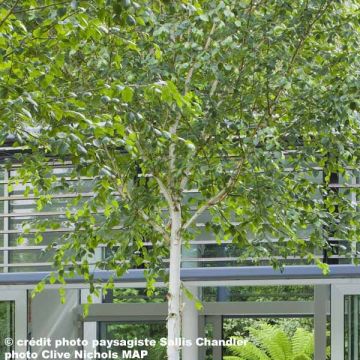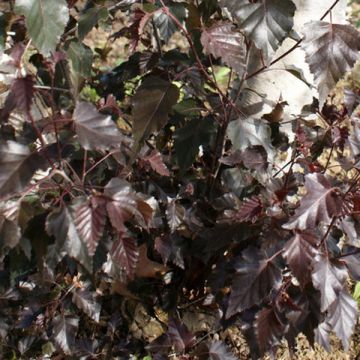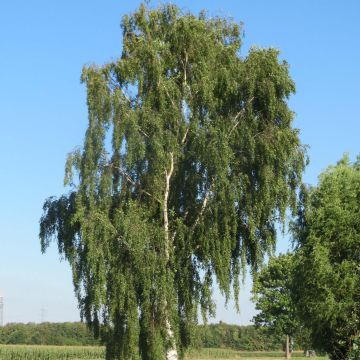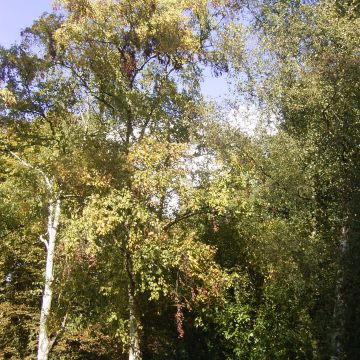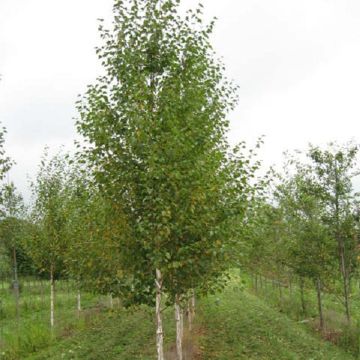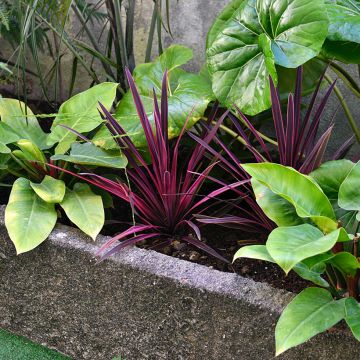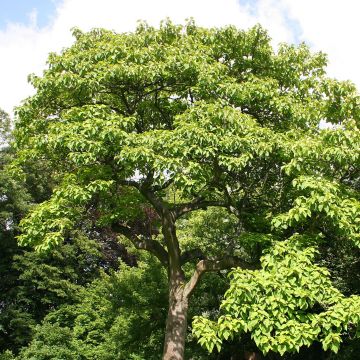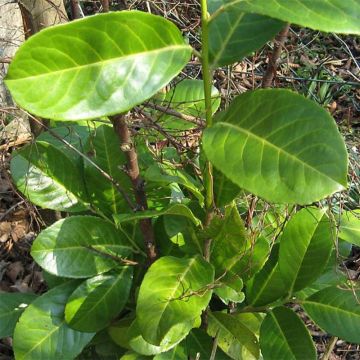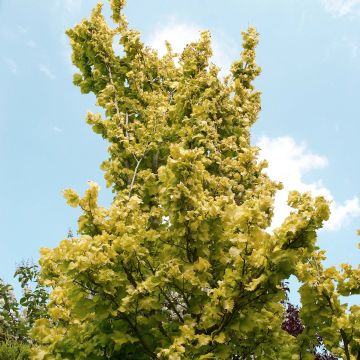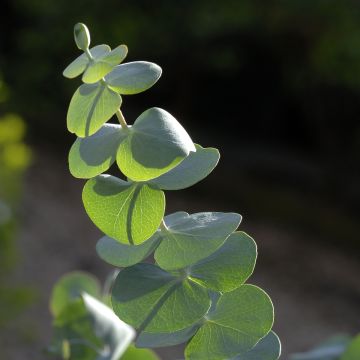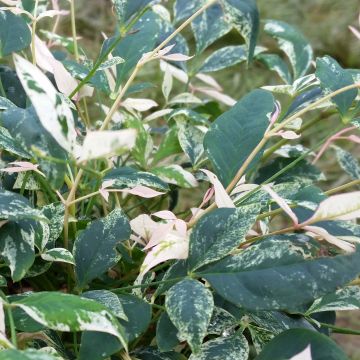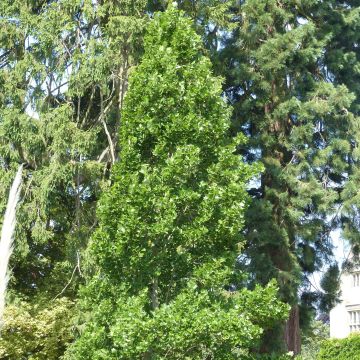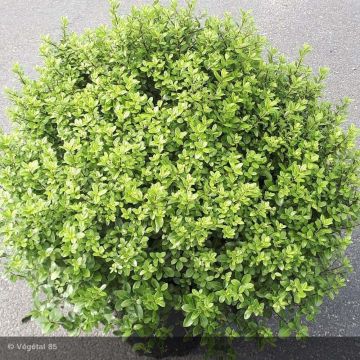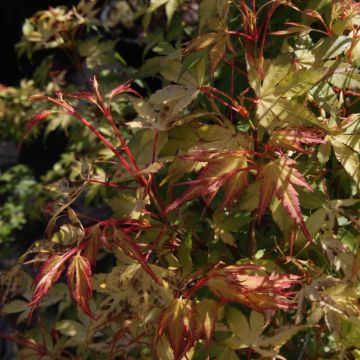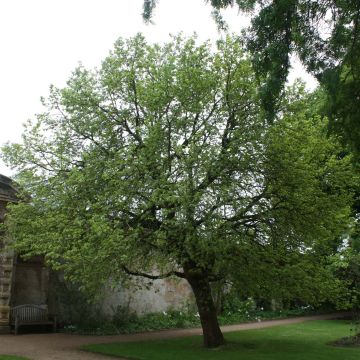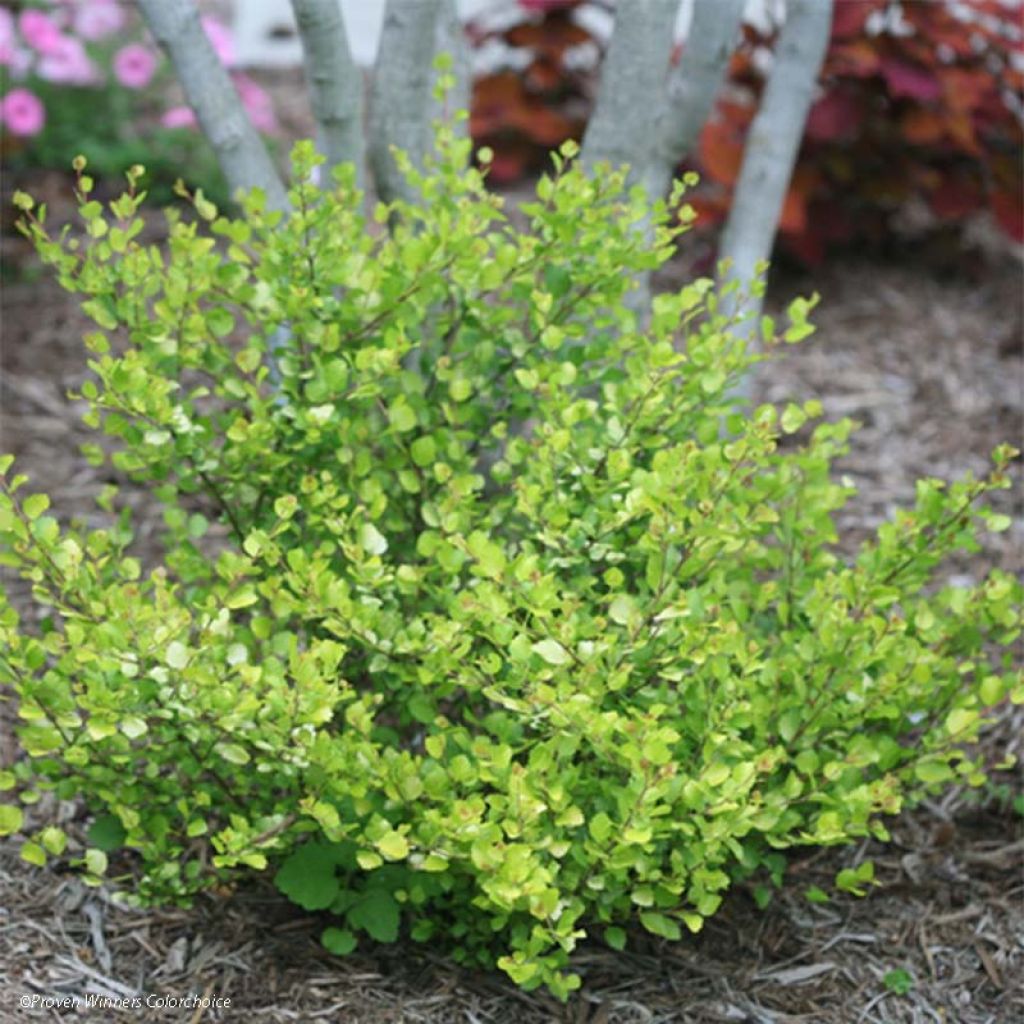

Betula nana Golden Treasure - Dwarf Birch
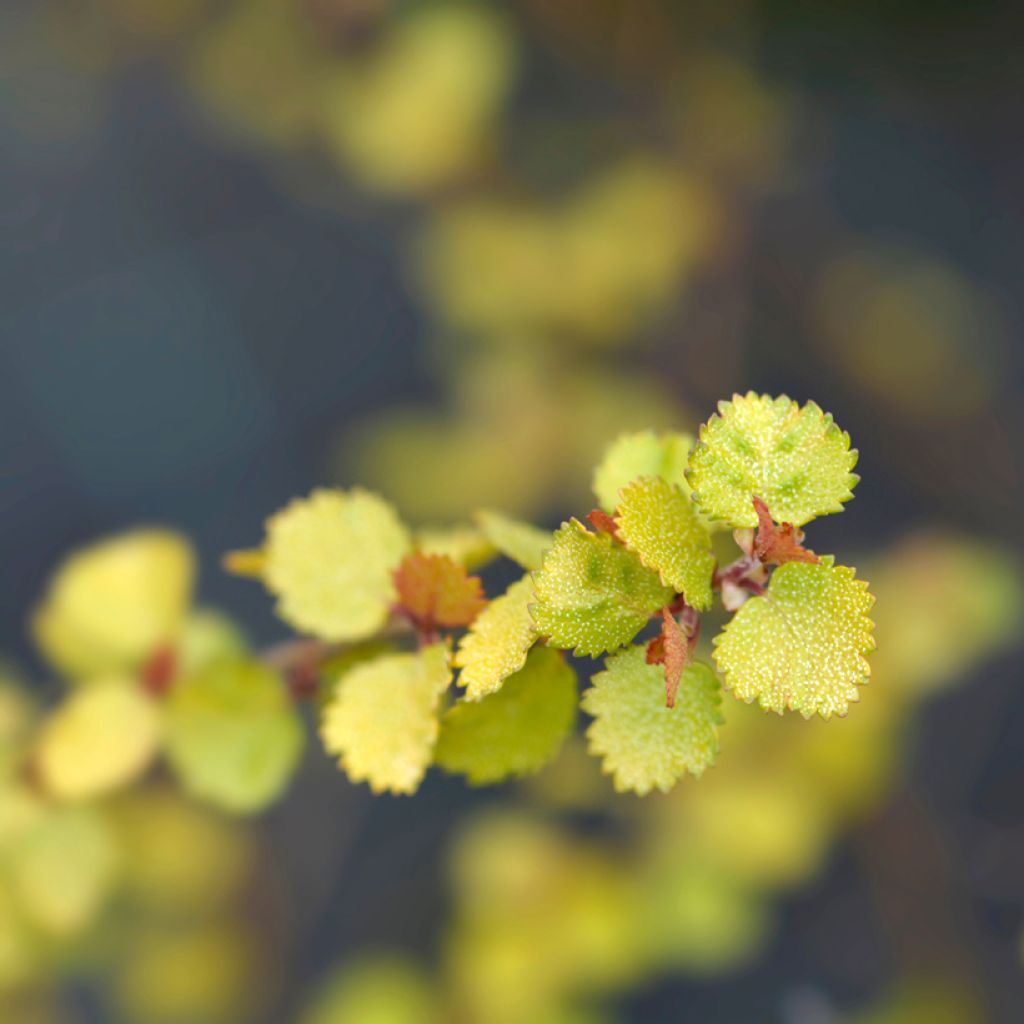

Betula nana Golden Treasure - Dwarf Birch
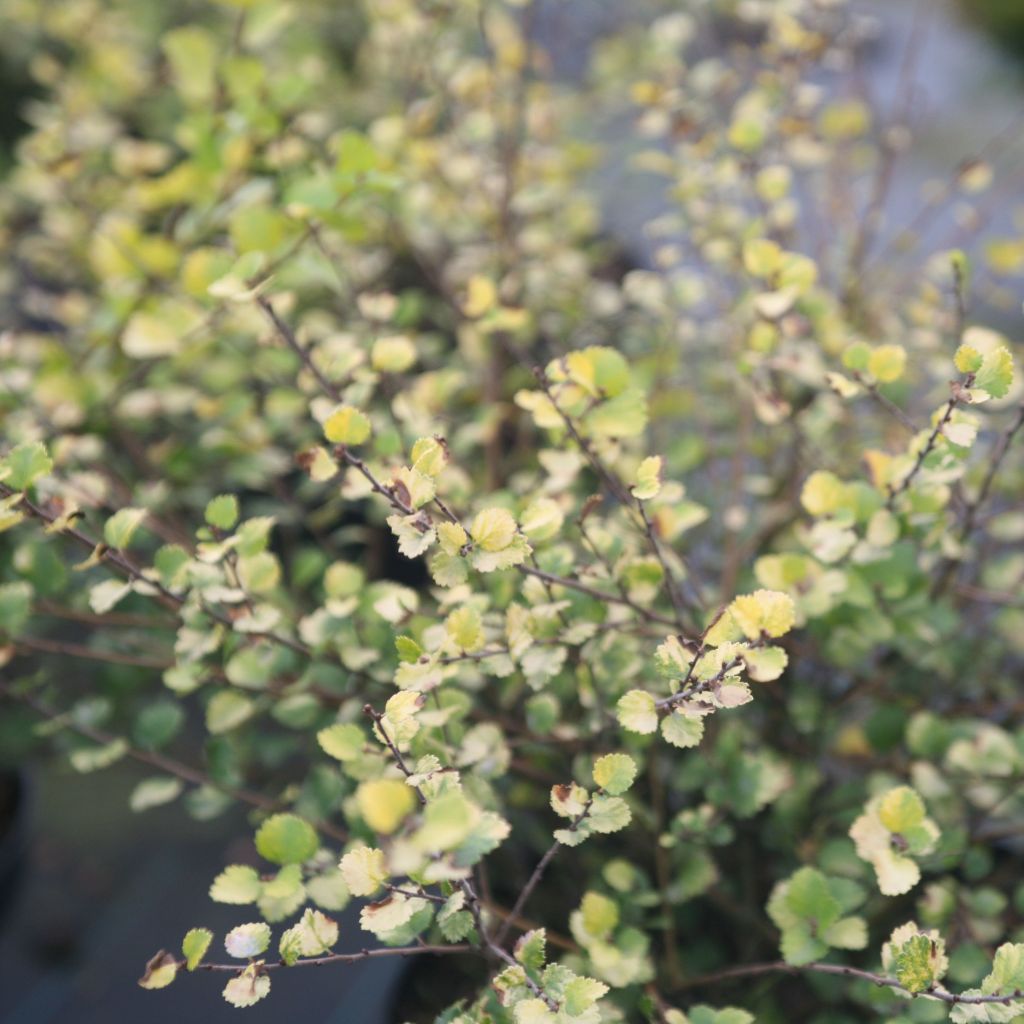

Betula nana Golden Treasure - Dwarf Birch
Betula nana Golden Treasure - Dwarf Birch
Betula nana Golden Treasure®
Dwarf Birch, Mountain Birch
This item cannot be shipped to the selected country
Delivery charge from €5.90
Delivery charge from €5.90
More information
Schedule delivery date,
and select date in basket
This plant carries a 24 months recovery warranty
More information
We guarantee the quality of our plants for a full growing cycle, and will replace at our expense any plant that fails to recover under normal climatic and planting conditions.
From €5.90 for pickup delivery and €6.90 for home delivery
Express home delivery from €8.90.
From €5.90 for pickup delivery and €6.90 for home delivery
Express home delivery from €8.90.

Does this plant fit my garden?
Set up your Plantfit profile →
Description
Betula nana Golden Treasure is an excellent addition to any garden. This plant is a type of dwarf birch that was immensely popular in the 70s but then forgotten. However, the Golden Treasure variety is anything but dull. It forms a compact golden bush that looks like a ball of golden fog and retains its beautiful appearance from summer to autumn. Moreover, it's a hardy and adaptable plant that can tolerate shallow soils and container gardening as long as the soil remains moist. This makes it perfect for small urban gardens, balconies, and sunny terraces.
The Golden Treasure Dwarf Birch is a cultivated variety of Betula nana, a small undershrub from the birch family. This species is commonly found in peat bogs, acidic heathlands of central and northern Europe, and boreal and arctic regions of Asia and America. The Golden Treasure Dwarf Birch has a compact and rounded shape, and it grows slowly, reaching a maximum of 1m (3 ft) in all directions. Its deciduous leaves are triangular with serrated edges, measuring less than 1 cm (0.4 in) each. The leaves are acid green in spring, while in summer and autumn, they turn golden yellow. The Golden Treasure Dwarf Birch blooms in May, producing female aments that are yellow-brown, upright, ovoid, and cylindrical.
The main attraction of the golden dwarf birch is its golden foliage, but its small size is a real asset for small spaces, rockeries, or flower containers. Planting with red or purple grasses, such as 'Red Baron' Imperata or Phormium tenax Purpureum, is fabulous, both in flower beds and on the terrace. All colourful foliage will accompany it: that of Physocarpus 'Diable d'Or', 'Diabolo', 'Lady in Red' or 'Midnight', Heuchera XXL, or 'Jofloma' Hydrangea macrophylla. Summer and acid-loving heathers, such as callunas, are perfect companions for this bush that grows alongside them in boreal heathlands.
Report an error about the product description
Betula nana Golden Treasure - Dwarf Birch in pictures
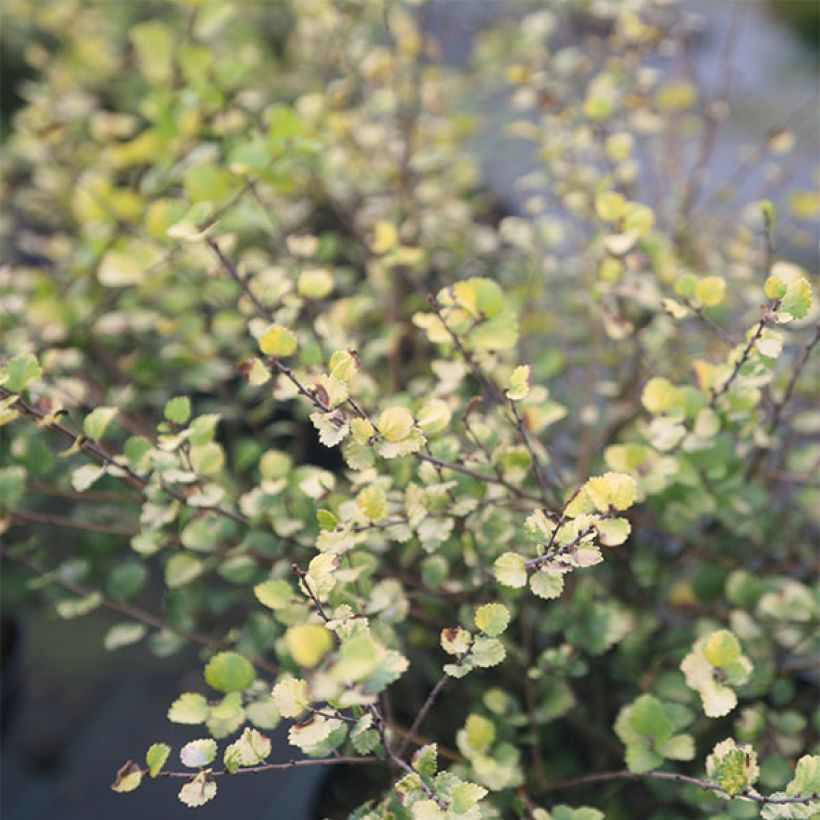

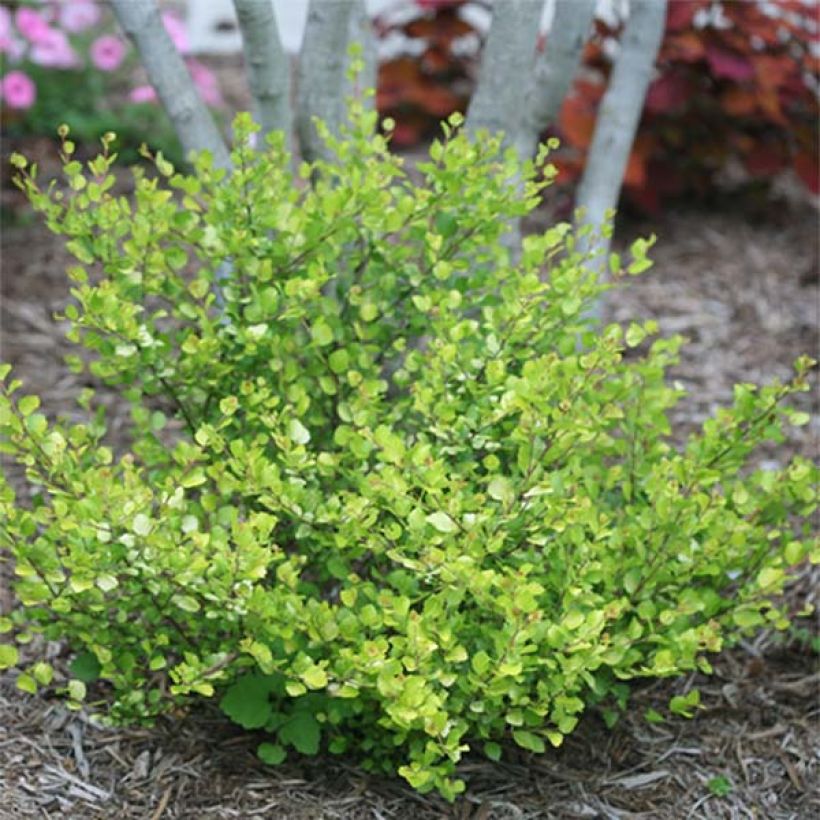

Plant habit
Flowering
Foliage
Safety measures
Botanical data
Betula
nana
Golden Treasure®
Betulaceae
Dwarf Birch, Mountain Birch
Cultivar or hybrid
atteinterespiratoire
Cette plante peut entraîner des symptômes allergiques.
Evitez de la planter si vous ou vos proches souffrez de rhinite saisonnière ("rhume des foins").
Davantage d'informations sur https://plantes-risque.info
Other Betula - Birch tree
Planting and care
Easy to grow in a soil that is not too chalky, even poor or clay, the dwarf birch requires little maintenance, apart from regular watering in pots or in case of prolonged drought. It is preferably planted in, water retaining, humus-rich, fertile soil, that is somewhat acidic, to obtain beautiful foliage colours, but it will also develop in neutral to slightly chalky soil, in the sun or in partial shade. Pruning in autumn will accentuate its compact habit, even if it is not essential.
Planting period
Intended location
Care
-
, onOrder confirmed
Reply from on Promesse de fleurs
Striking foliage shrubs
Haven't found what you were looking for?
Hardiness is the lowest winter temperature a plant can endure without suffering serious damage or even dying. However, hardiness is affected by location (a sheltered area, such as a patio), protection (winter cover) and soil type (hardiness is improved by well-drained soil).

Photo Sharing Terms & Conditions
In order to encourage gardeners to interact and share their experiences, Promesse de fleurs offers various media enabling content to be uploaded onto its Site - in particular via the ‘Photo sharing’ module.
The User agrees to refrain from:
- Posting any content that is illegal, prejudicial, insulting, racist, inciteful to hatred, revisionist, contrary to public decency, that infringes on privacy or on the privacy rights of third parties, in particular the publicity rights of persons and goods, intellectual property rights, or the right to privacy.
- Submitting content on behalf of a third party;
- Impersonate the identity of a third party and/or publish any personal information about a third party;
In general, the User undertakes to refrain from any unethical behaviour.
All Content (in particular text, comments, files, images, photos, videos, creative works, etc.), which may be subject to property or intellectual property rights, image or other private rights, shall remain the property of the User, subject to the limited rights granted by the terms of the licence granted by Promesse de fleurs as stated below. Users are at liberty to publish or not to publish such Content on the Site, notably via the ‘Photo Sharing’ facility, and accept that this Content shall be made public and freely accessible, notably on the Internet.
Users further acknowledge, undertake to have ,and guarantee that they hold all necessary rights and permissions to publish such material on the Site, in particular with regard to the legislation in force pertaining to any privacy, property, intellectual property, image, or contractual rights, or rights of any other nature. By publishing such Content on the Site, Users acknowledge accepting full liability as publishers of the Content within the meaning of the law, and grant Promesse de fleurs, free of charge, an inclusive, worldwide licence for the said Content for the entire duration of its publication, including all reproduction, representation, up/downloading, displaying, performing, transmission, and storage rights.
Users also grant permission for their name to be linked to the Content and accept that this link may not always be made available.
By engaging in posting material, Users consent to their Content becoming automatically accessible on the Internet, in particular on other sites and/or blogs and/or web pages of the Promesse de fleurs site, including in particular social pages and the Promesse de fleurs catalogue.
Users may secure the removal of entrusted content free of charge by issuing a simple request via our contact form.
The flowering period indicated on our website applies to countries and regions located in USDA zone 8 (France, the United Kingdom, Ireland, the Netherlands, etc.)
It will vary according to where you live:
- In zones 9 to 10 (Italy, Spain, Greece, etc.), flowering will occur about 2 to 4 weeks earlier.
- In zones 6 to 7 (Germany, Poland, Slovenia, and lower mountainous regions), flowering will be delayed by 2 to 3 weeks.
- In zone 5 (Central Europe, Scandinavia), blooming will be delayed by 3 to 5 weeks.
In temperate climates, pruning of spring-flowering shrubs (forsythia, spireas, etc.) should be done just after flowering.
Pruning of summer-flowering shrubs (Indian Lilac, Perovskia, etc.) can be done in winter or spring.
In cold regions as well as with frost-sensitive plants, avoid pruning too early when severe frosts may still occur.
The planting period indicated on our website applies to countries and regions located in USDA zone 8 (France, United Kingdom, Ireland, Netherlands).
It will vary according to where you live:
- In Mediterranean zones (Marseille, Madrid, Milan, etc.), autumn and winter are the best planting periods.
- In continental zones (Strasbourg, Munich, Vienna, etc.), delay planting by 2 to 3 weeks in spring and bring it forward by 2 to 4 weeks in autumn.
- In mountainous regions (the Alps, Pyrenees, Carpathians, etc.), it is best to plant in late spring (May-June) or late summer (August-September).
The harvesting period indicated on our website applies to countries and regions in USDA zone 8 (France, England, Ireland, the Netherlands).
In colder areas (Scandinavia, Poland, Austria...) fruit and vegetable harvests are likely to be delayed by 3-4 weeks.
In warmer areas (Italy, Spain, Greece, etc.), harvesting will probably take place earlier, depending on weather conditions.
The sowing periods indicated on our website apply to countries and regions within USDA Zone 8 (France, UK, Ireland, Netherlands).
In colder areas (Scandinavia, Poland, Austria...), delay any outdoor sowing by 3-4 weeks, or sow under glass.
In warmer climes (Italy, Spain, Greece, etc.), bring outdoor sowing forward by a few weeks.

































